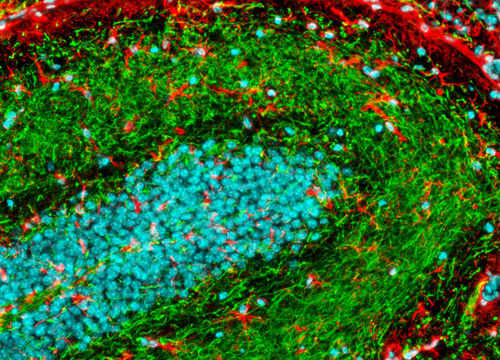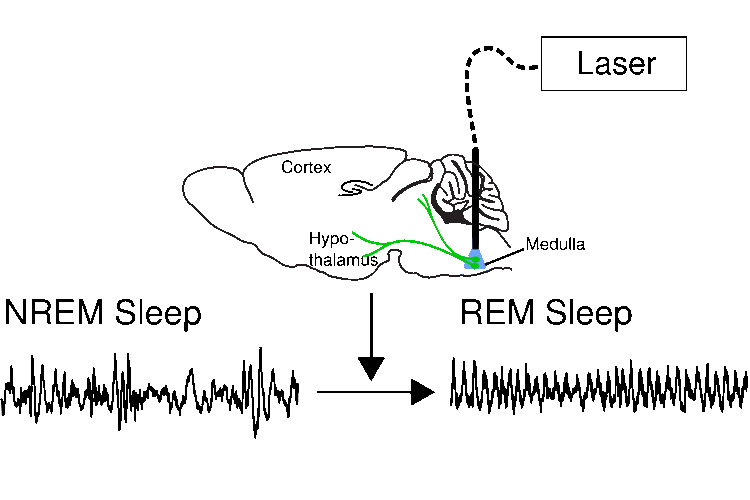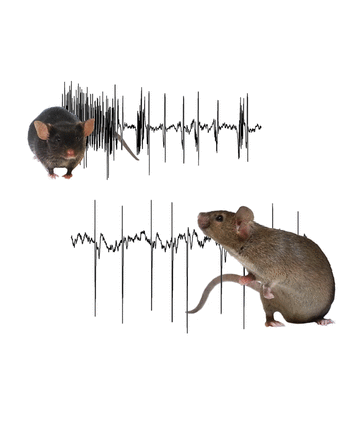Methods
Summary
We currently utilize Pinnacle Technology's turn-key system for EEG recording and optogenetic recording.

We have special lines of transgenic mice which, with the use of stereotactically injected channelrhodopsin or archaerhodopsin viruses, we will be able to silence REM sleep.

We will verify where we have injected these viruses through immunohistochemistry

We will silence REM sleep by targeting specific brain regions such as the medial septum or the ventral medulla.
 See protocols in (Weber et. al 2015, Boyce et. al 2016) Then, we assay the behavioral mood phenotype of the mice using techniques such as the Forced Swim Test or Tail Suspension Test
See protocols in (Weber et. al 2015, Boyce et. al 2016) Then, we assay the behavioral mood phenotype of the mice using techniques such as the Forced Swim Test or Tail Suspension Test
Challenges
It will be difficult to precisely and reliably target brain regions responsible for REM. We will verify that we have correctly hit our targets by using slice physiology and fluorescence microscopy to see the eYFP expressed as a control. Scoring forced-swim tests can be subjective, and prone to error, so we hope to overcome this by using automated scoring software.
Pre Analysis Plan
We will first verify that we can silence or activate REM sleep by looking at the EEG waveforms from these transgenic mice. Then, after this step is verified, we will look at the mood behavior phenotype of the mice, in transgenic vs. control mice.

Protocols
This project has not yet shared any protocols.